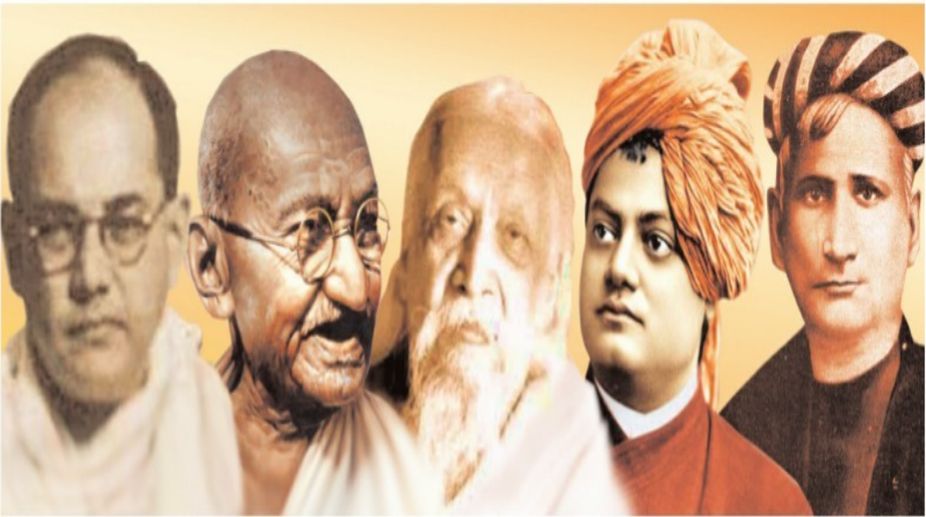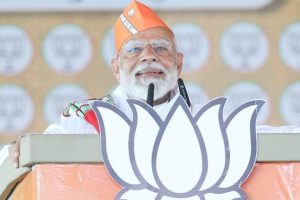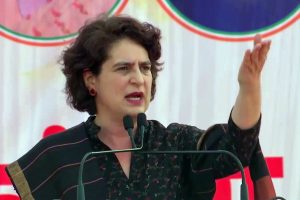As the Warsaw Pact was collapsing in 1989, the Japanese-American political philosopher Francis Fukuyama published an essay “The End of History” in the journal “The National Interest”, which he later elaborated into a highly acclaimed and controversial book, The End of History and the Last Man in 1992. The author claimed: “What we are witnessing is the end of history as such: that is, the end point of mankind’s ideological evolution and the universalisation of Western liberal democracy as the final form of human government.” This was, according to Fukuyama, the fulfilment of Hegel’s prophecy. This came to my mind in the wake of the spectacular gain of the BJP in the latest UP elections, which along with the party’s dominance in Uttarakhand and Haryana confirmed its hold in the Hindi belt of our country. Barring some coastal states, the party is now well entrenched all over the country, and is spreading its wings even in the North-East.
The latest state election results led many analysts to discuss the future political developments of our country. Most focused their analysis on the election results since Independence and dwelt on dominant leaders, notably Jawaharlal Nehru, Indira Gandhi and Narendra Modi. Some could even see a silver lining in the miserable performance of the Congress and the possibility of regional parties to gang up together to defeat the BJP some time in the future. The comeback of the Congress after Sonia Gandhi assumed charge of the party and the defeat of Indira Gandhi by the united Opposition in 1977 were used to support those wistful thinkings. Then, of course, were the traditional arguments of our history of religious tolerance, the impossibility of Hindutva ideology to be accepted for long with so much divisions and conflicts within the adherents of the Hindu faith itself, and the Hindu “majoritarian” impulse finally inhibiting our development by sapping us of whatever scientific temperament we might possess.
Although a scary thought, I started thinking that, to paraphrase Fukuyama, we in India may be approaching the end point of our ideological evolution, with the hegemony of the Hindutva ideology becoming the final form of our political structure. Most analysts date Hindutva back to the tract Essentials of Hindutva” by Vinayak Damodar Savarkar during the early twenties of the last century. This notion of Hindutva formed the basis of Hindu nationalism, which included all religions originating from India, but excluded those with foreign roots. This led KB Hedgewar, after deliberation with Savarkar about organising the Hindu nation in Bharat, to form the RSS (Rashtriya Swayamsevak Sangha). This organisation formed the cadre for the already established Akhil Bharatya Hindu Mahasabha, and the Sangh Parivar was born.
But the idea of the Hindu nation goes back half a century earlier and was first explicitly propounded by the great writer, Bankimchandra Chatterjee. He countered the assertion of British historians that India was merely a geographical entity and not a nation in the western sense. He argued that the Aryans took over a vast swathe of Indian territory in prehistoric times and created a nation. Gradually it got split by internal and external forces and led to the disintegration of the nation.
Only when Hindus get united would a modern version of the Hindu nation be established in India. He, along with many historians, thought of Indian history as composed of our glorious Hindu past, followed by the Muslim conquest and rule by foreign invaders for a millennium, and finally British rule during his time. Although Muslims were tolerated, Bharat was essentially a Hindu nation.
Bankimchandra focused on religious symbols shared by Hindus in all regions and among all communities of Hindus, instead of on abstruse philosophical subtleties of our past. He brought The Gita to the forefront, championing it as our sacred text in line with the Bible or the Quran. He weeded out all later additions on Krishna in the Mahabharata and portrayed him as the uttam purush (greatest human being) that ever existed in history! Finally he glorified the Hindu selfless community of monks in the novel, Anandamath, and immortalised “Bande Mataram” by inserting that hymn to the Mother Durga there. I have never met any Hindu who had the slightest reservation with any of these efforts of Bankimchandra. Whatever discomfort people had about his ignoring the large Muslim population living in this land of Bharat evaporated with the creation of Pakistan.
Bankimchandra was followed as great defender of Hinduism by Swami Vivekananda, the universally acclaimed spiritual father of modern India. He was the first Indian to defend vigorously the Hindu religion against the common prejudices of the Abrahamic religions at the World Congress of Religions at the Art Institute in Chicago in 1893. He continued in town hall meetings during his long stay in the United States thereafter to champion the universality and superiority of Advaita Vedanta over all other philosophies of religion. In those parochial times, his efforts met with little success abroad, but his courage and conviction electrified Hindus in India leading them to imagine that they psychologically belonged to one nation. Swami Vivekananda was always careful to give the Muslim inhabitants of India due respect and wanted their cooperation in building this new nation. His concept of India as a nation was still a religious one, and not a political entity in the way understood in the West.
During Swami Vivekananda’s lifetime, the nascent movement for our self-rule began with the founding of the Indian National Congress. Leaders of the movement were the “true children of Macaulay,” whose main aim was to rule over the hapless millions in India directly, instead of acting as stooges of their British masters. This elitist movement was leading nowhere, when the revolutionary Swadeshi movement burst into the scene in Bengal at the start of the 20th century. They drew inspiration from both Bankimchandra and Swami Vivekananda, and one of their young leaders inspired them with the great Hindu heritage. He is, of course, one of our most revered religious philosophers ~ Sri Aurobindo. Before the end of the second decade of the last century this revolutionary movement was crushed by the British and the country was going through soulsearching that led to two different movements. Both used Hindu symbolisms to develop a nationwide upsurge of support for fighting against British rule.
The first and most important, of course, was the arrival of Mahatma Gandhi on the national political scene and his taking over the leadership of the Indian National Congress. His startling contribution was to create a mass movement for this struggle against the British by engaging the normally apathetic Indian villagers in this common cause, a feat that was never achieved in Indian history before. Netaji explained this miraculous phenomenon thus ~”His simple life, his vegetarian diet, his goat’s milk, his day of silence every week, his habit of squatting on the floor instead of sitting on a chair, his loin cloth ~ in fact everything connected with him ~ has marked him out as one of the eccentric Mahatmas of the old and brought him nearer to his people.”
These were quintessentially Hindu symbolisms, including his harping on the Ram Rajya as the ideal to strive for in the Independent Bharat. Mahatma Gandhi, of course, has been highly sympathetic and concerned about the Muslim inhabitants of India. To bring them into his movement, he sided with their leaders in demanding the return of the Caliphate in Turkey that was torn asunder at the end of the First World War. This regressive demand lost relevance when Kamal Ataturk took over power in Turkey and set out to make his country a modern liberal nation following the models in Europe.
The writer is former Dean and Emeritus Professor of Applied Mathematics, University of Twente, The Netherlands.











